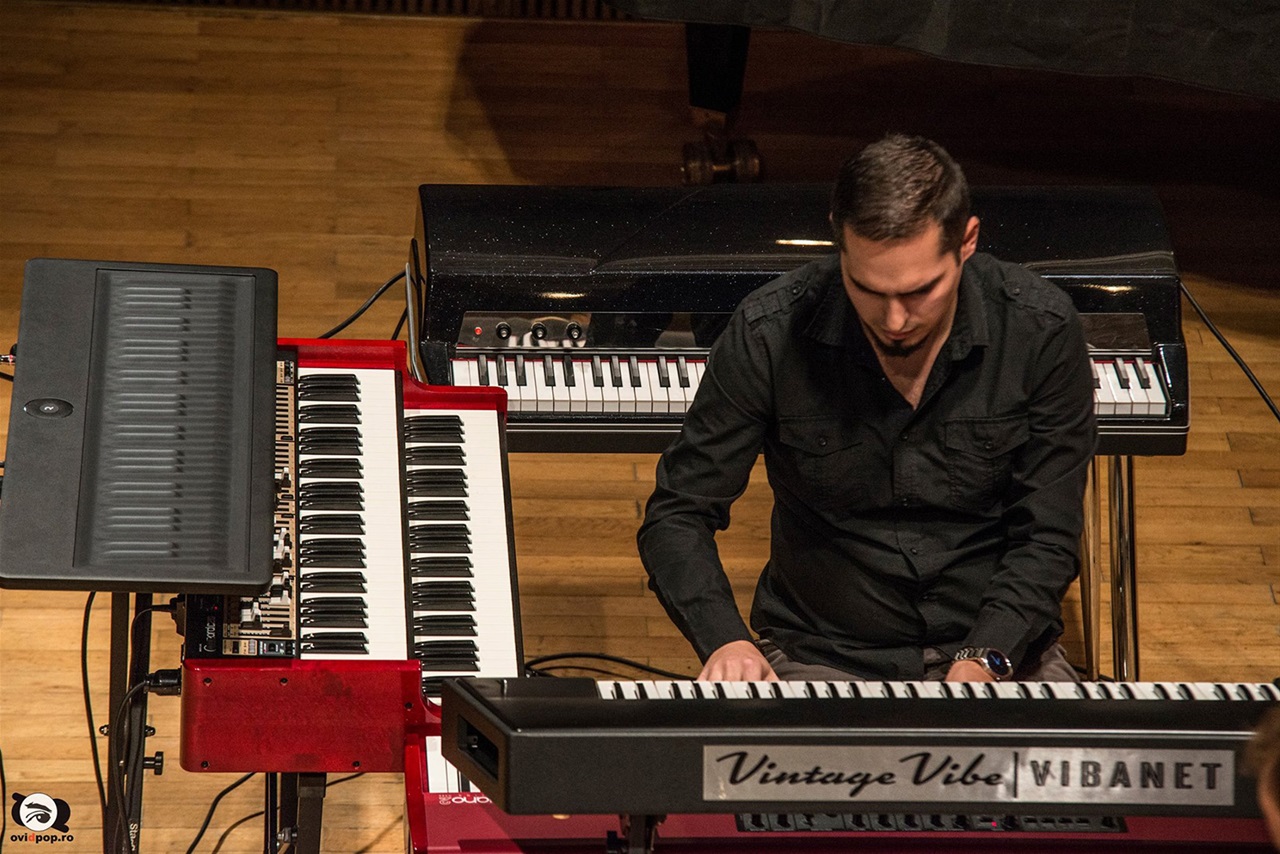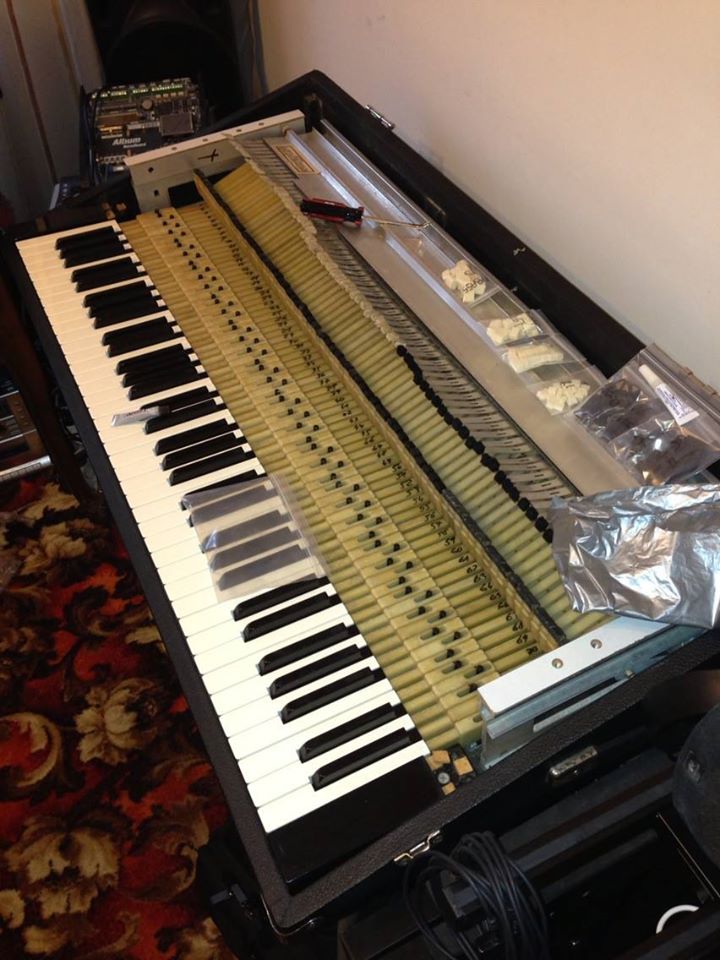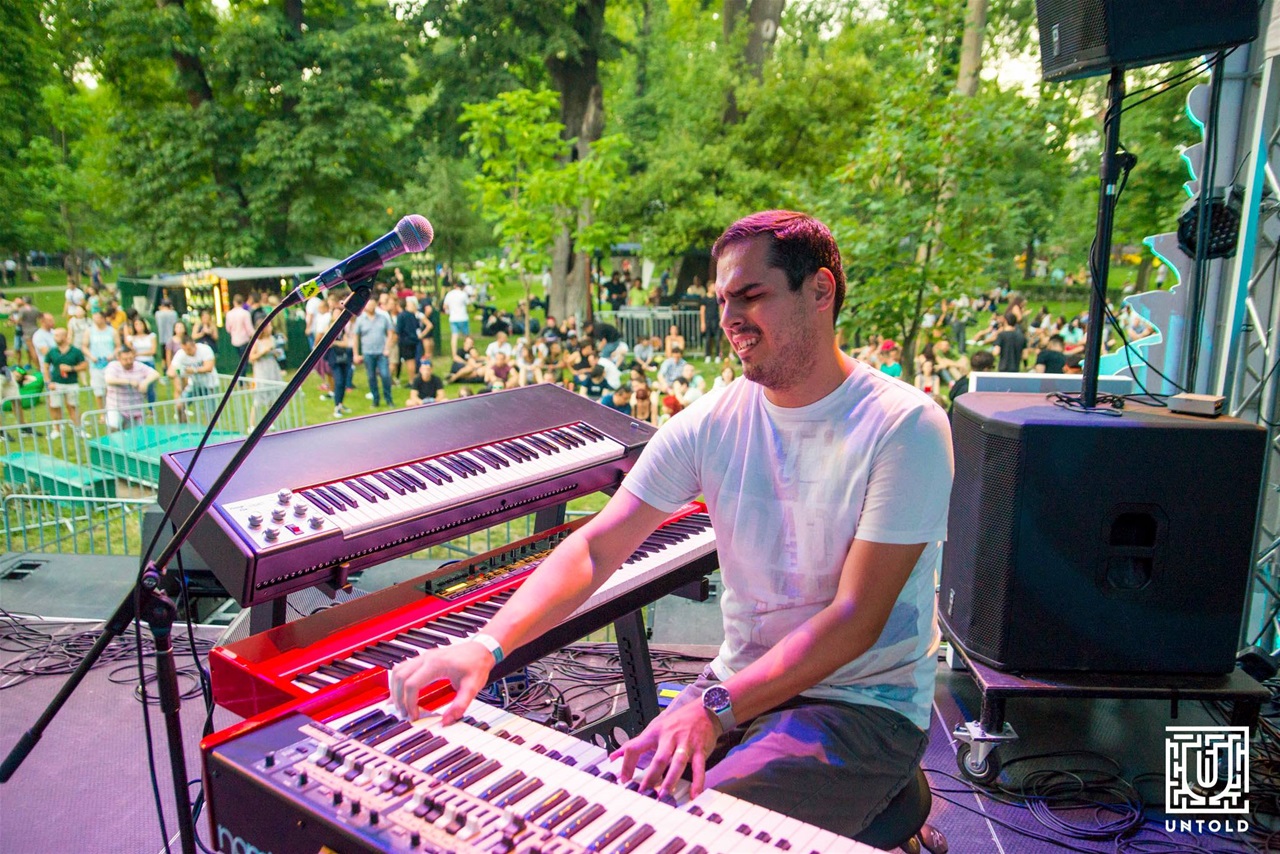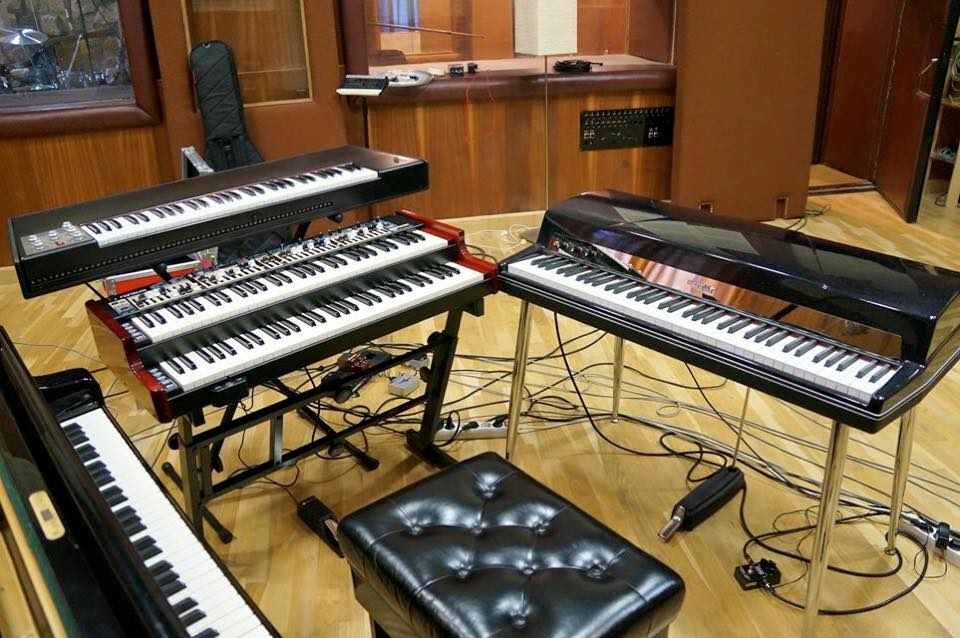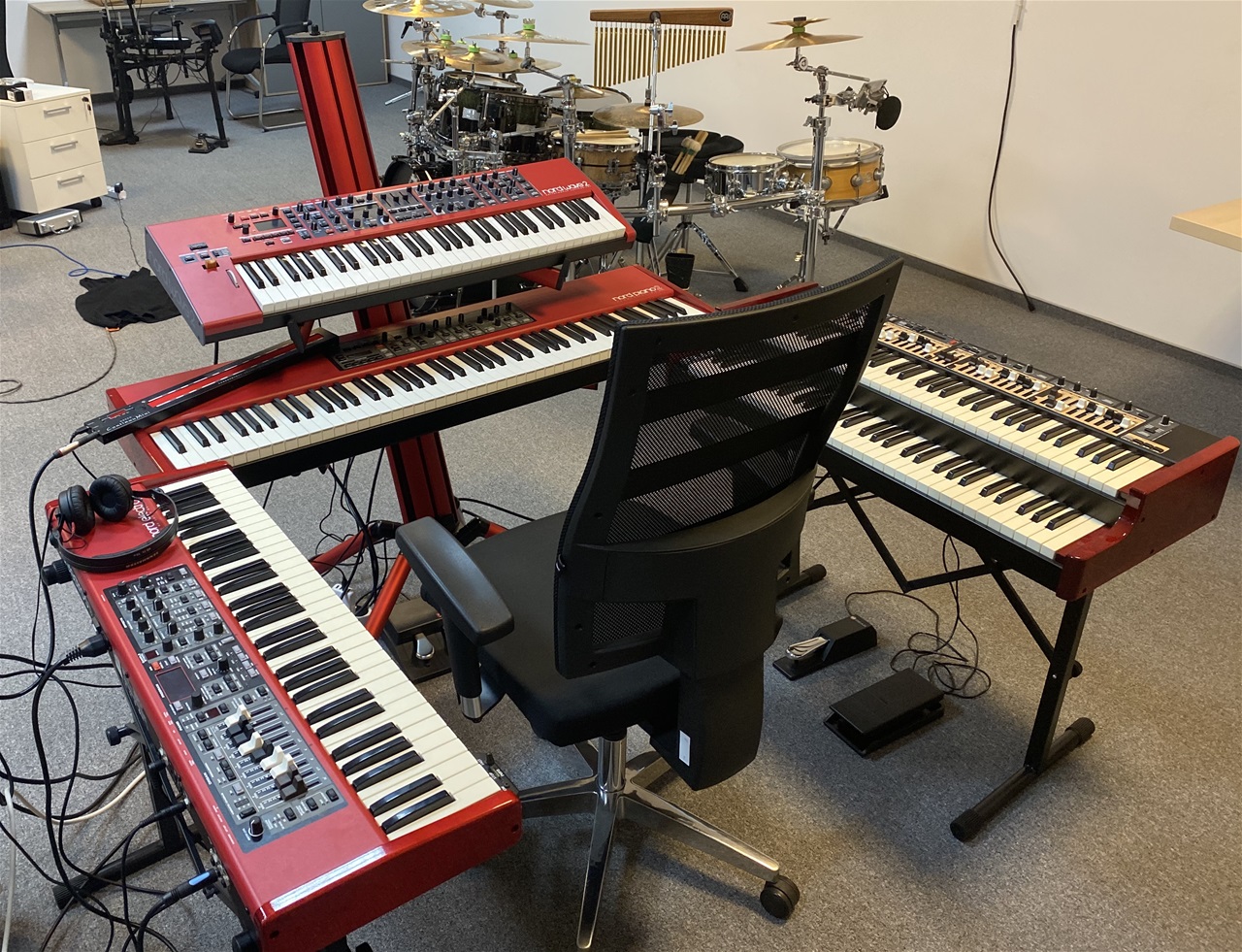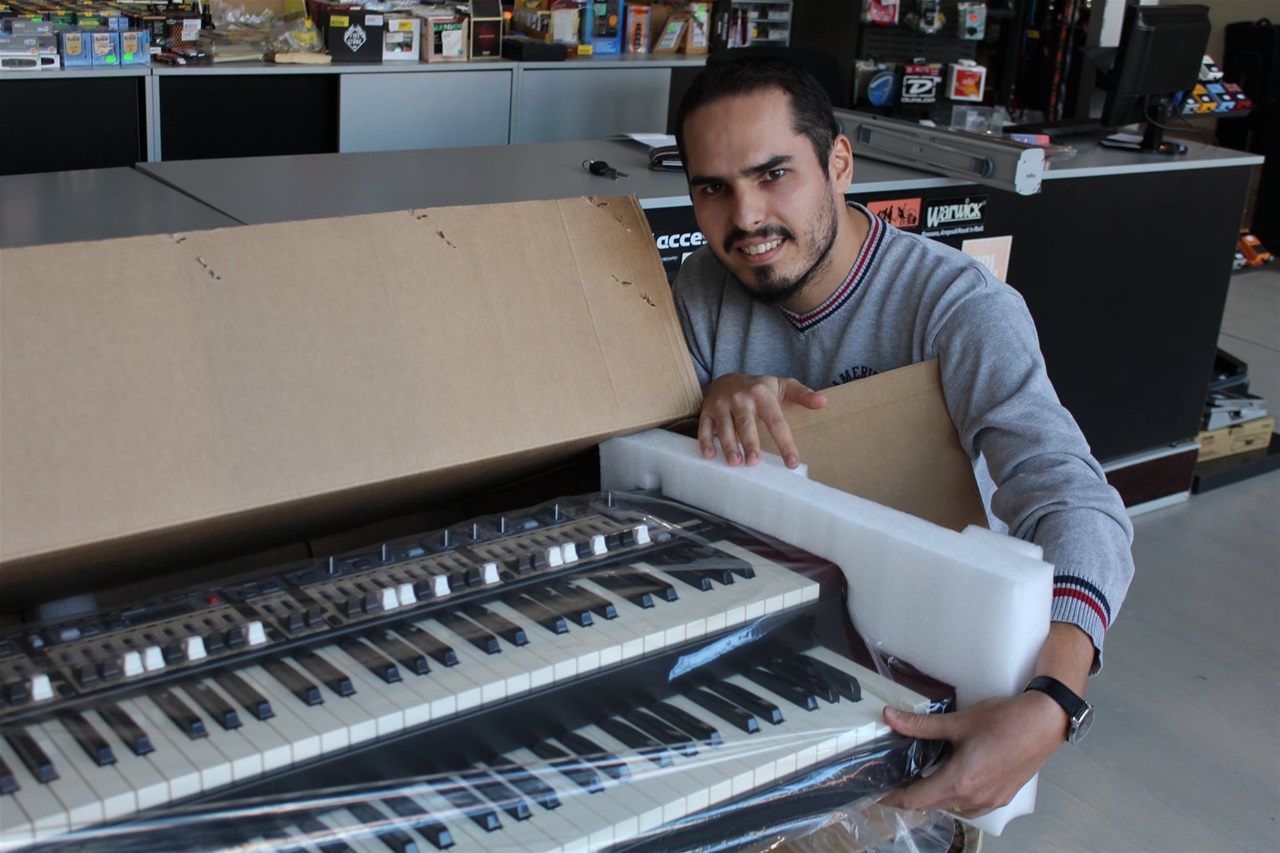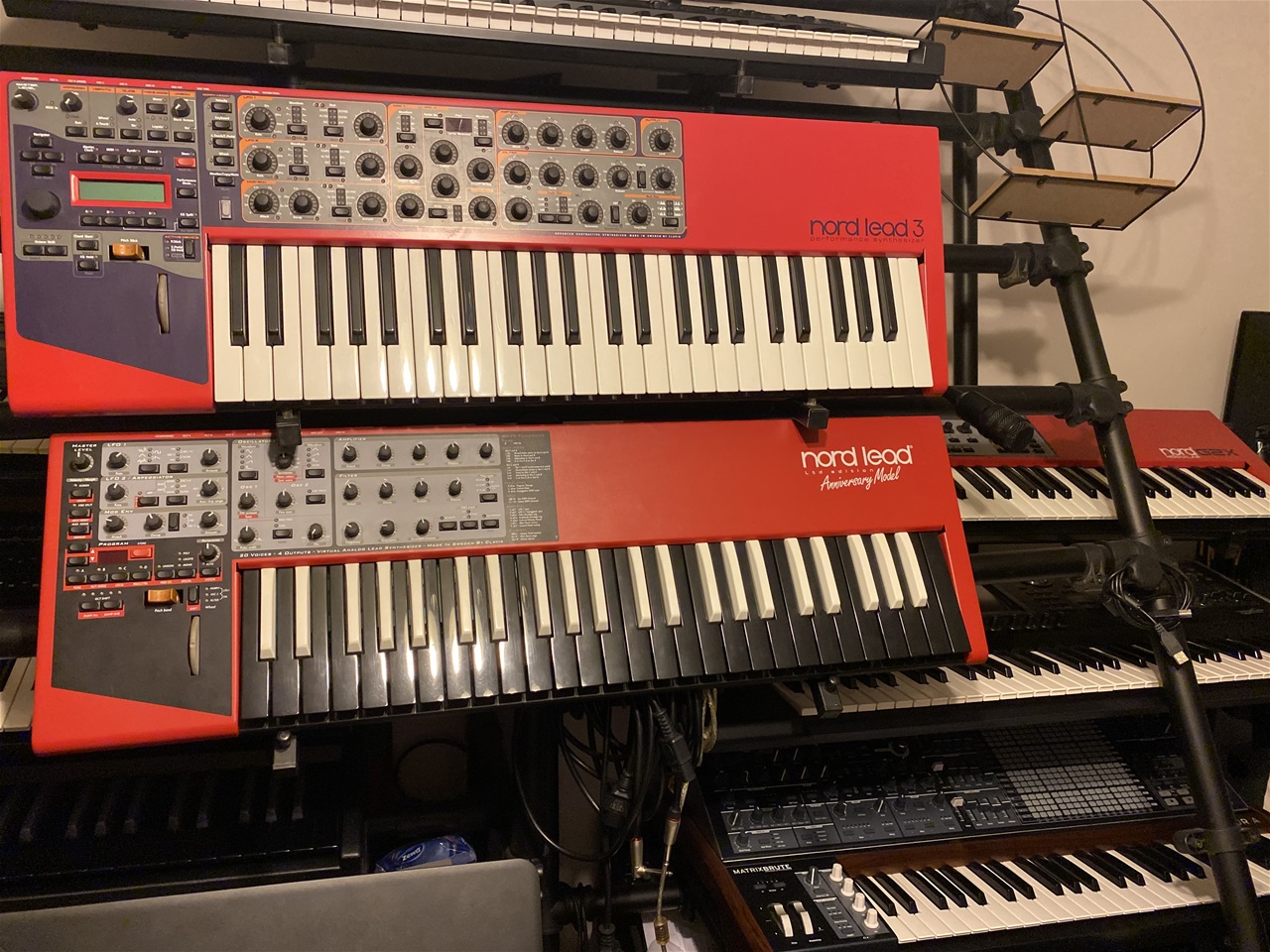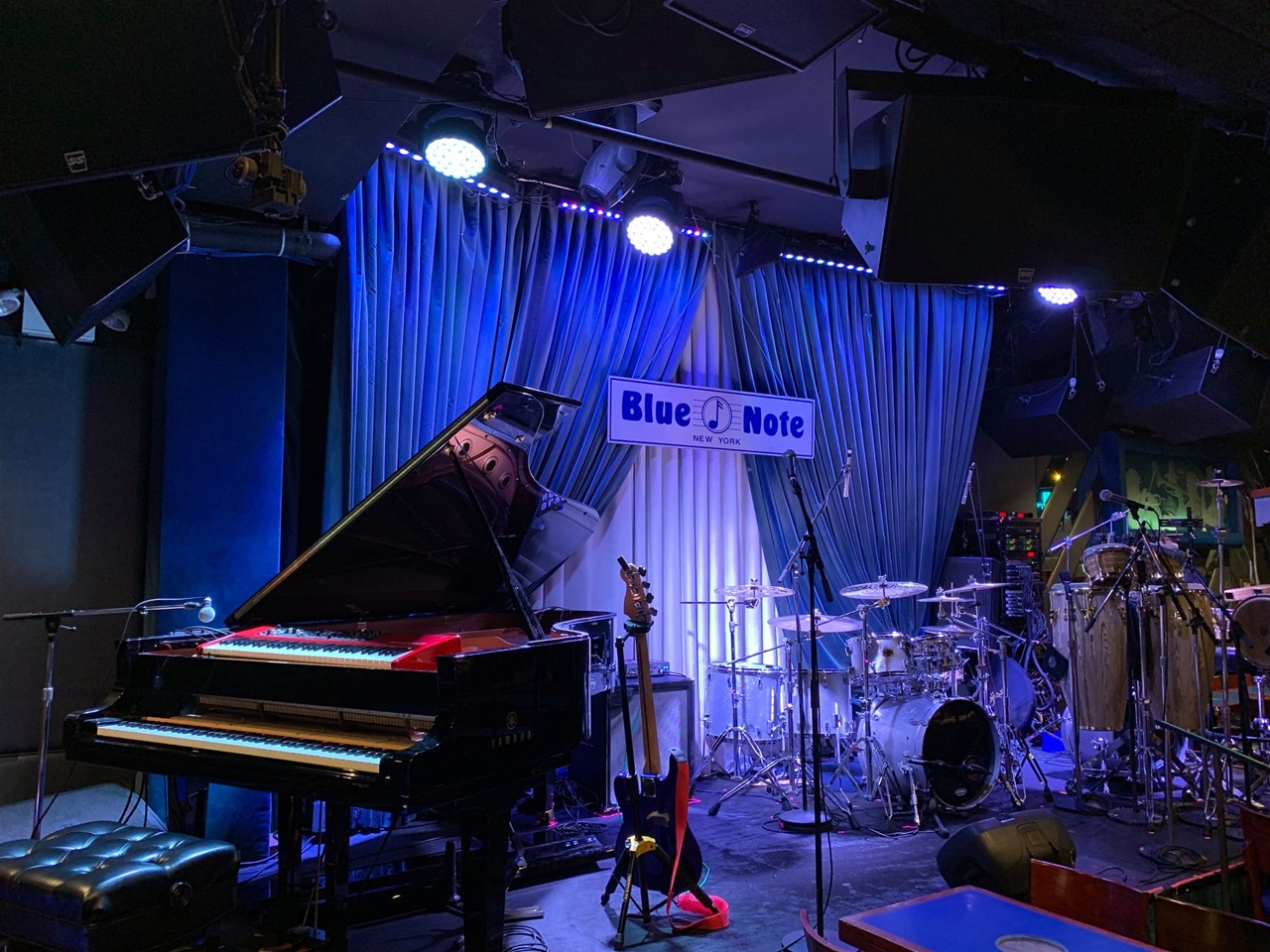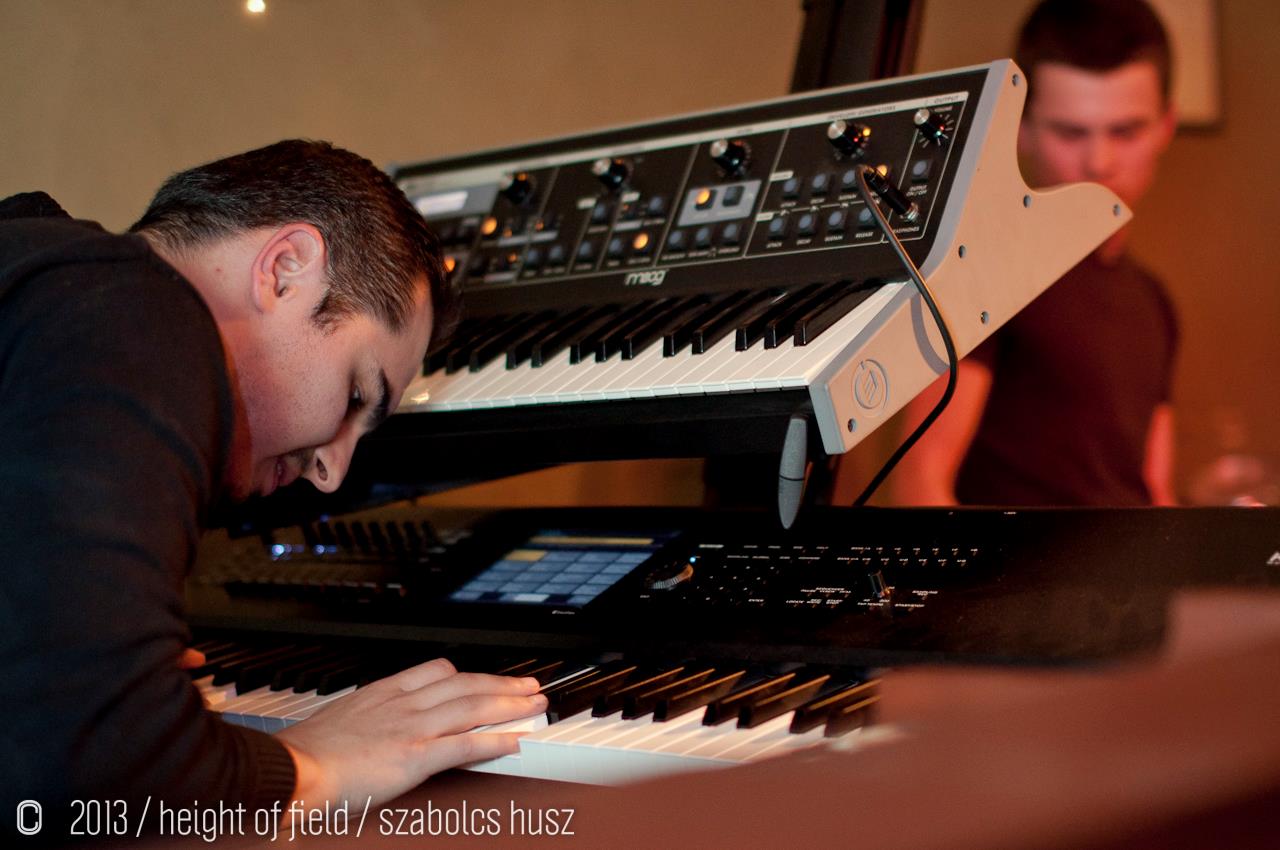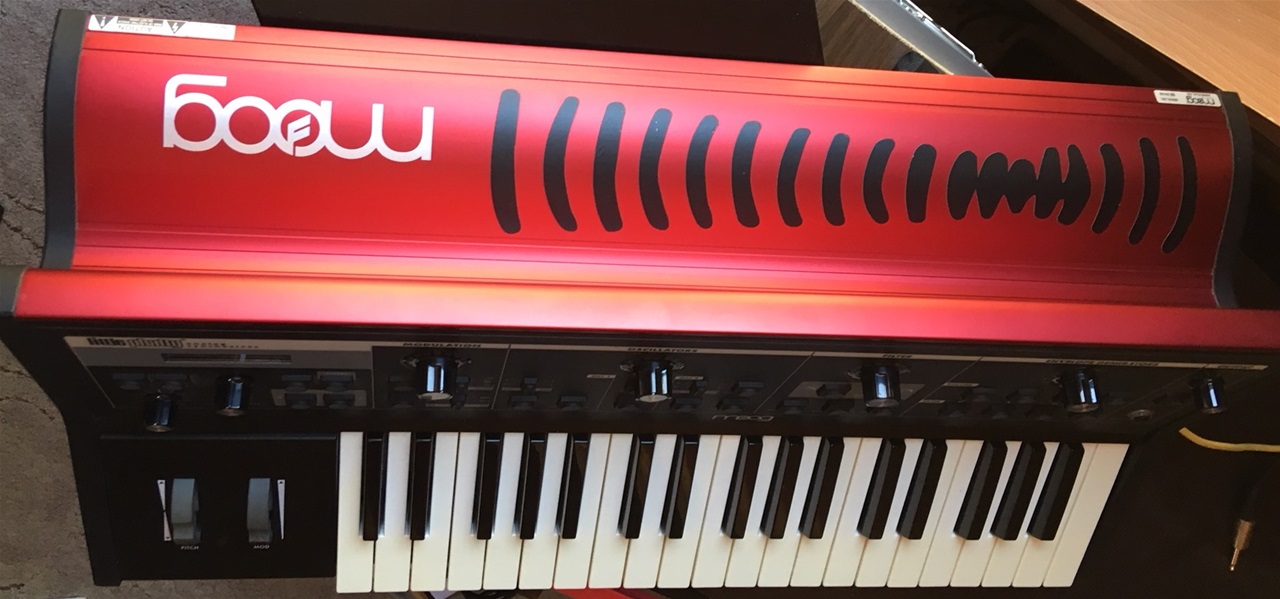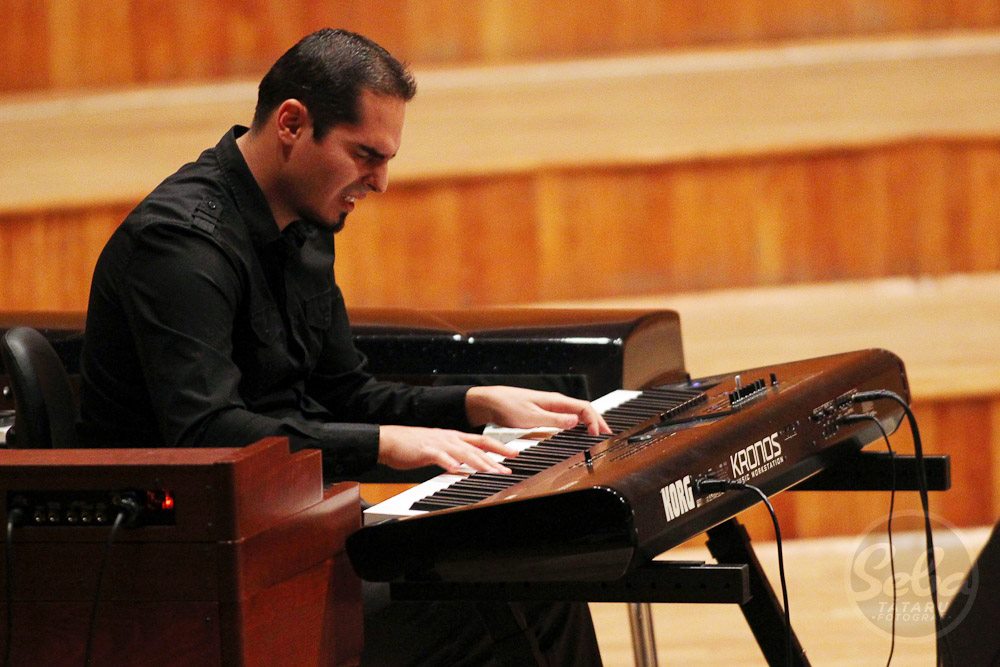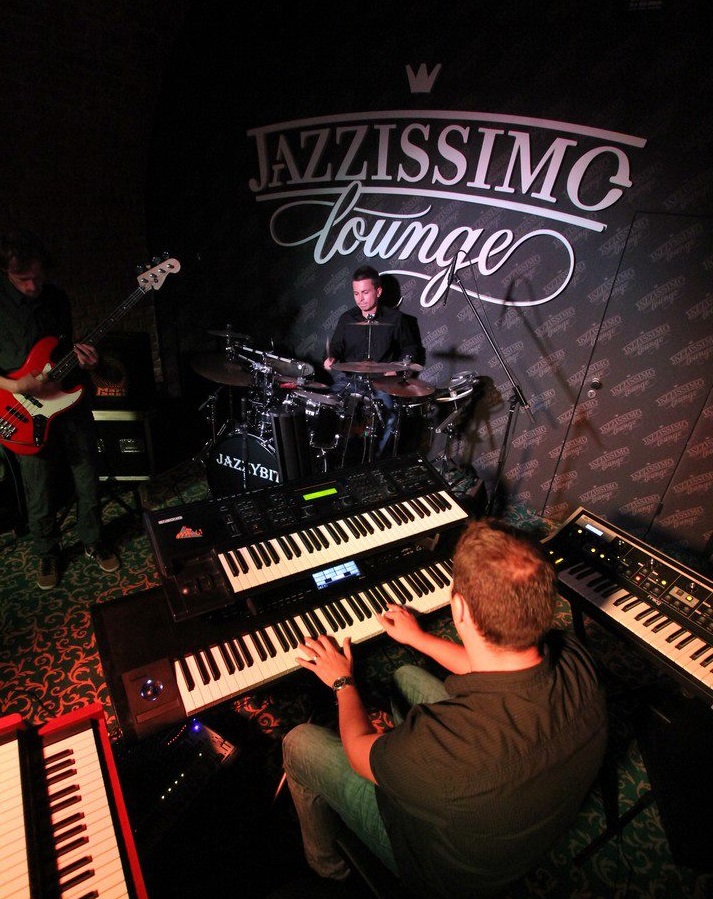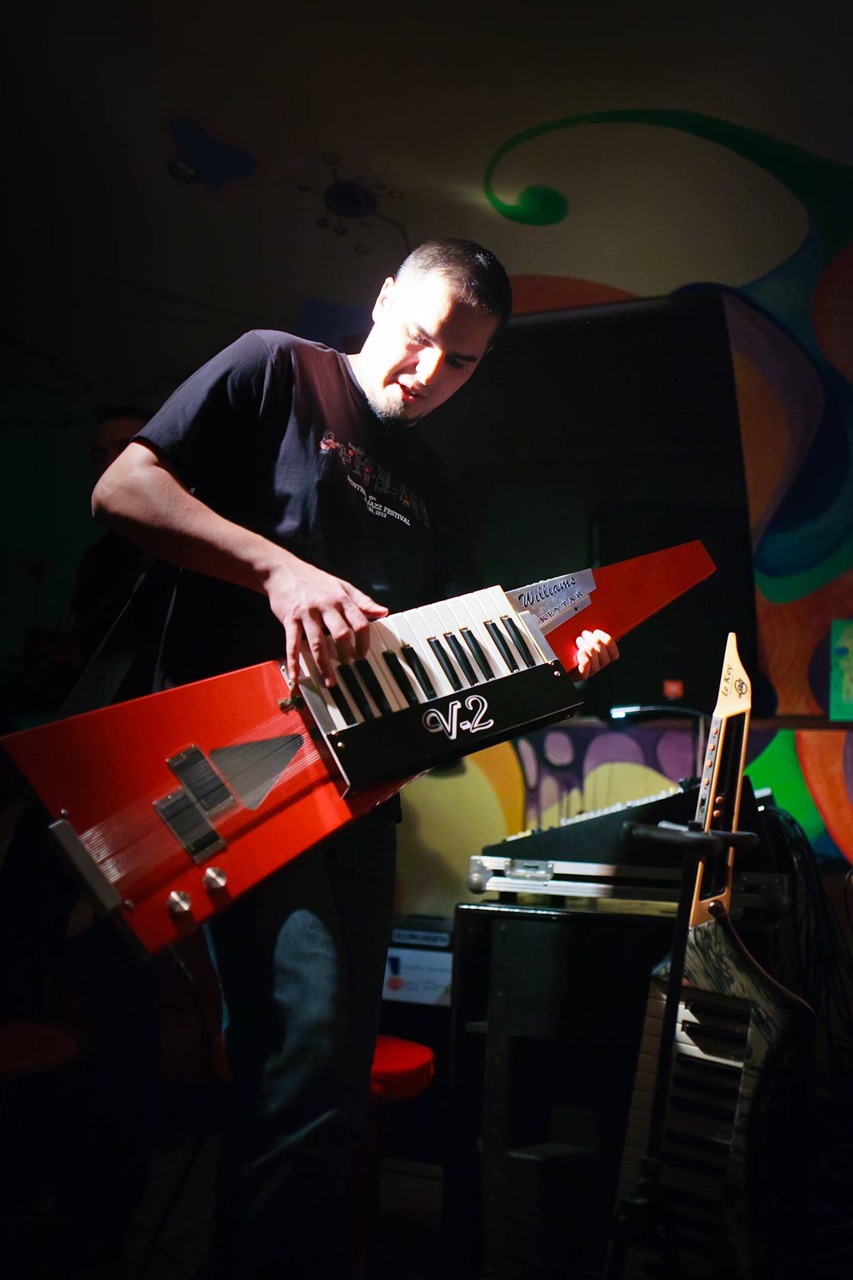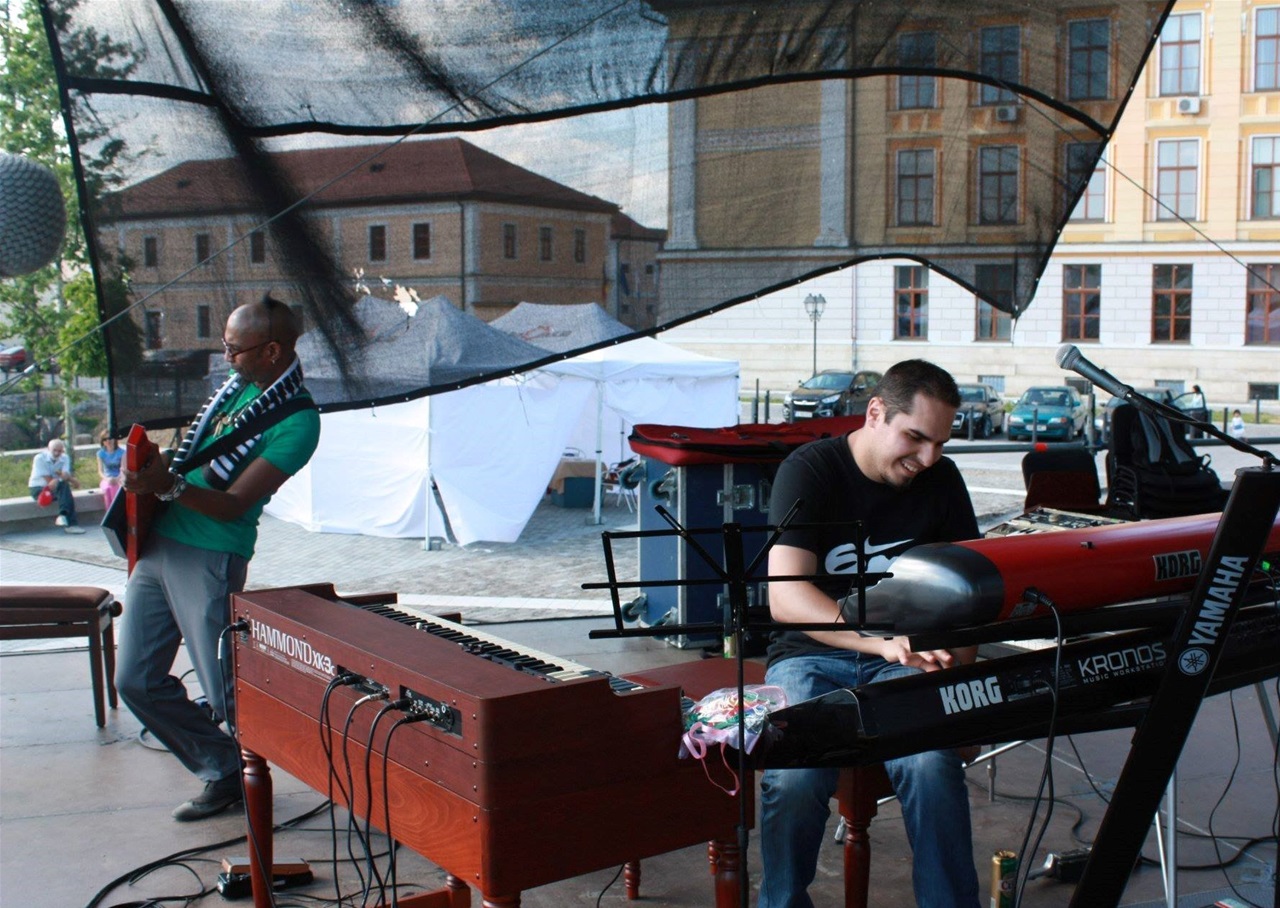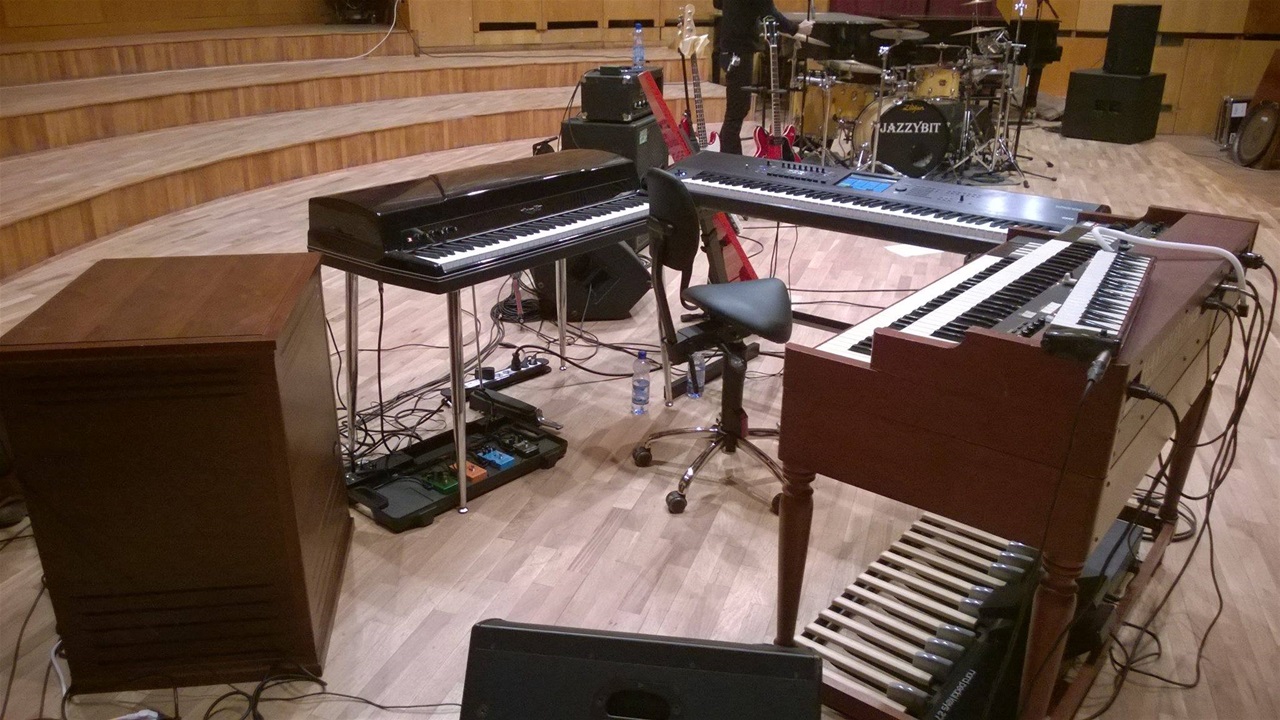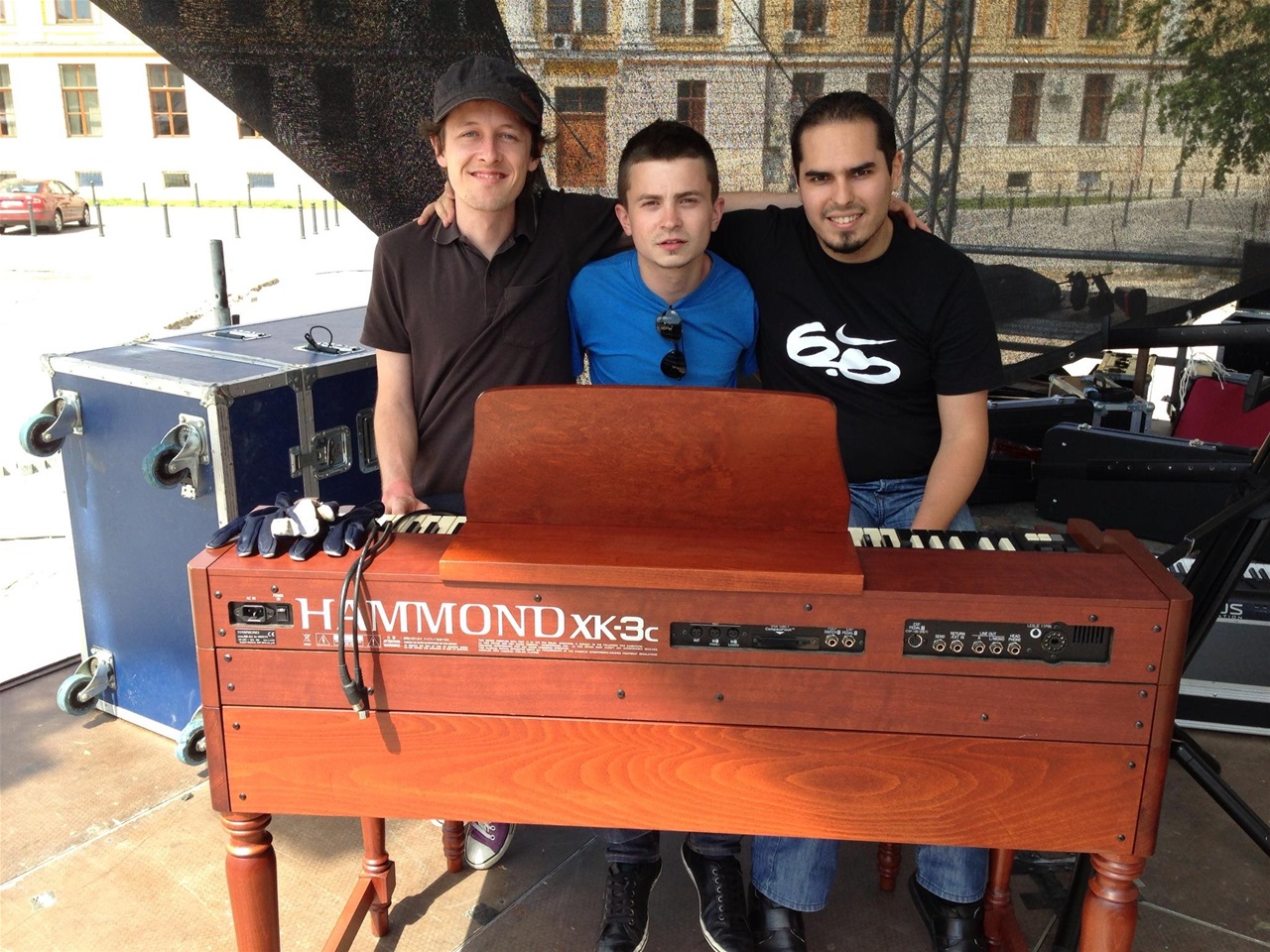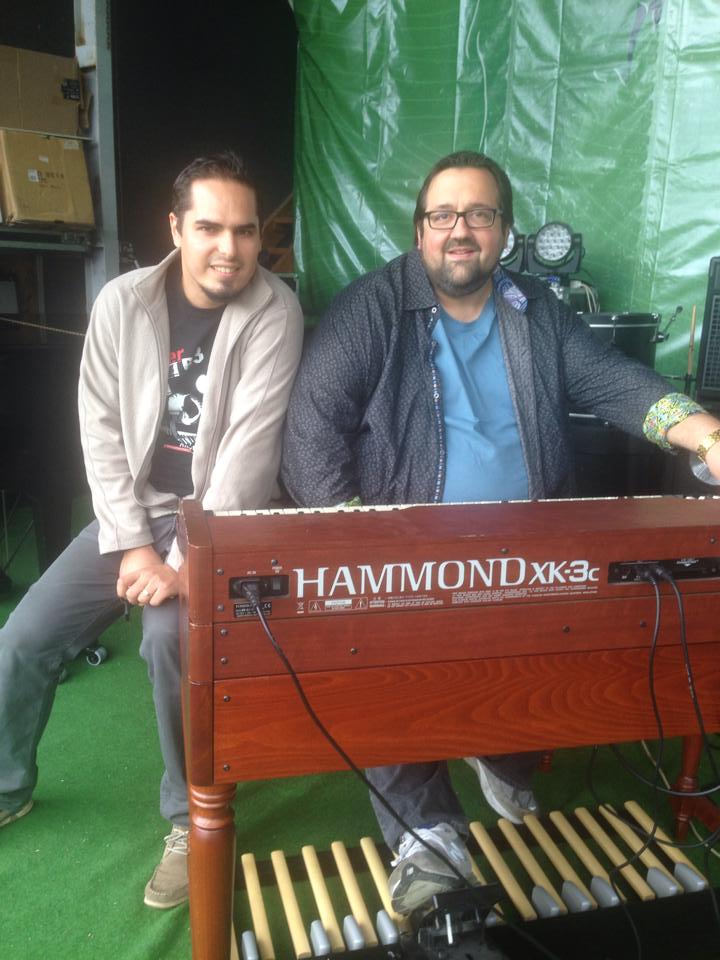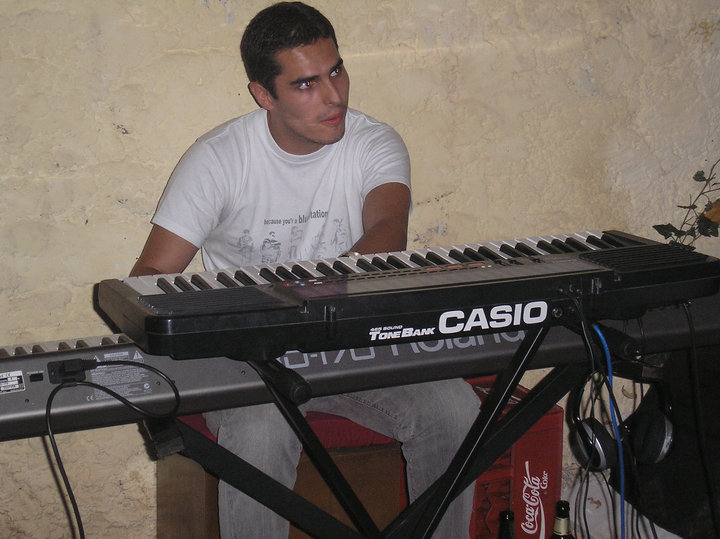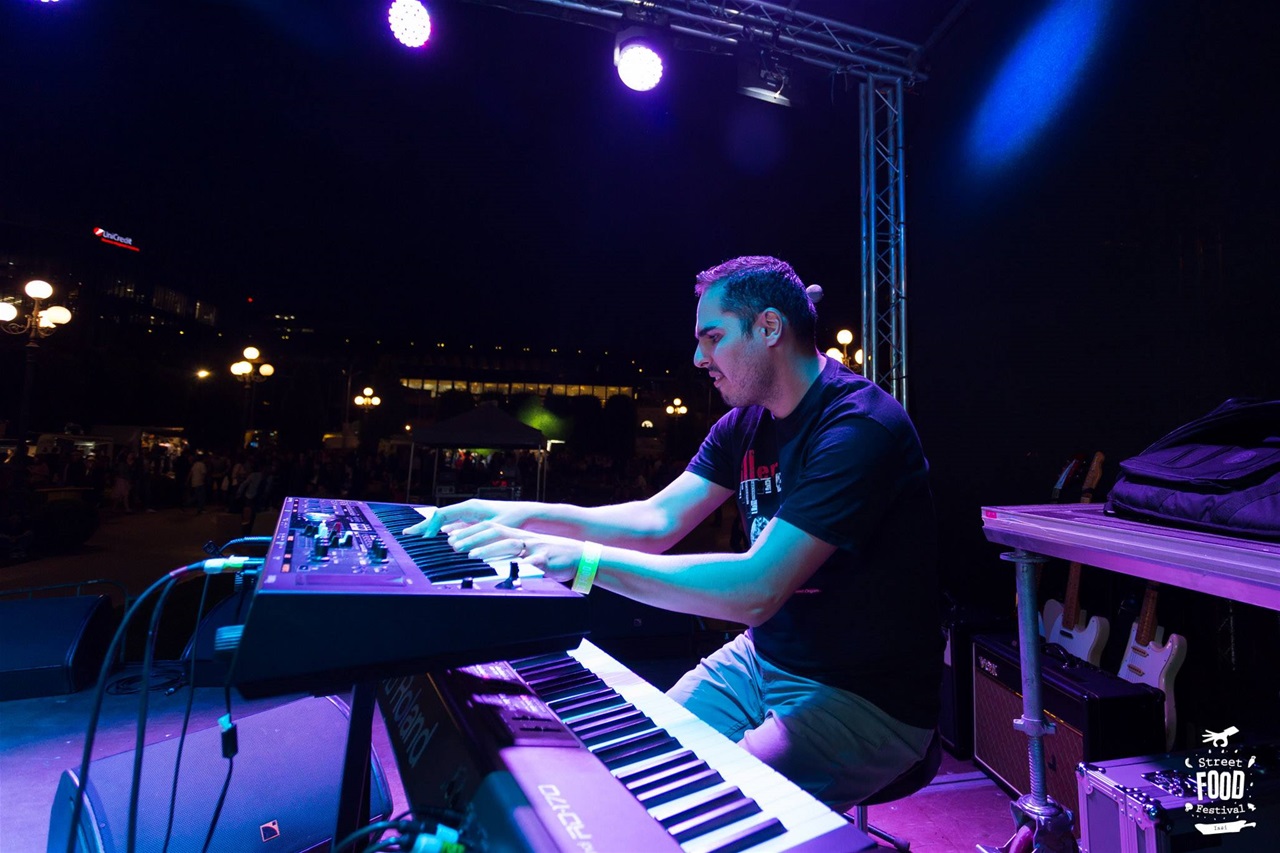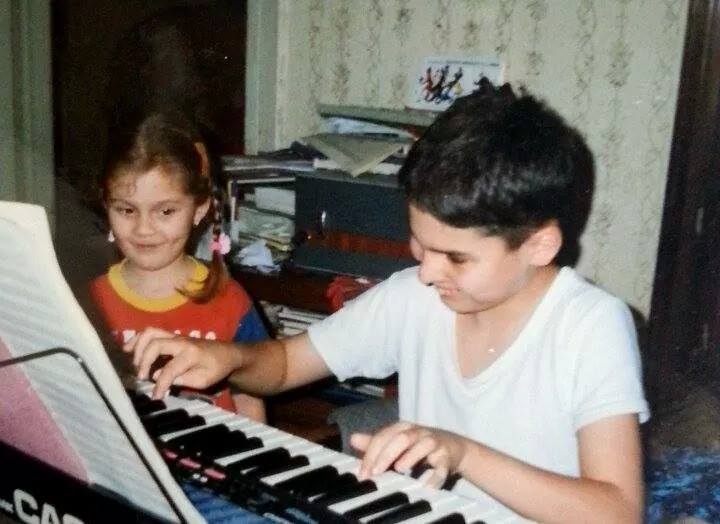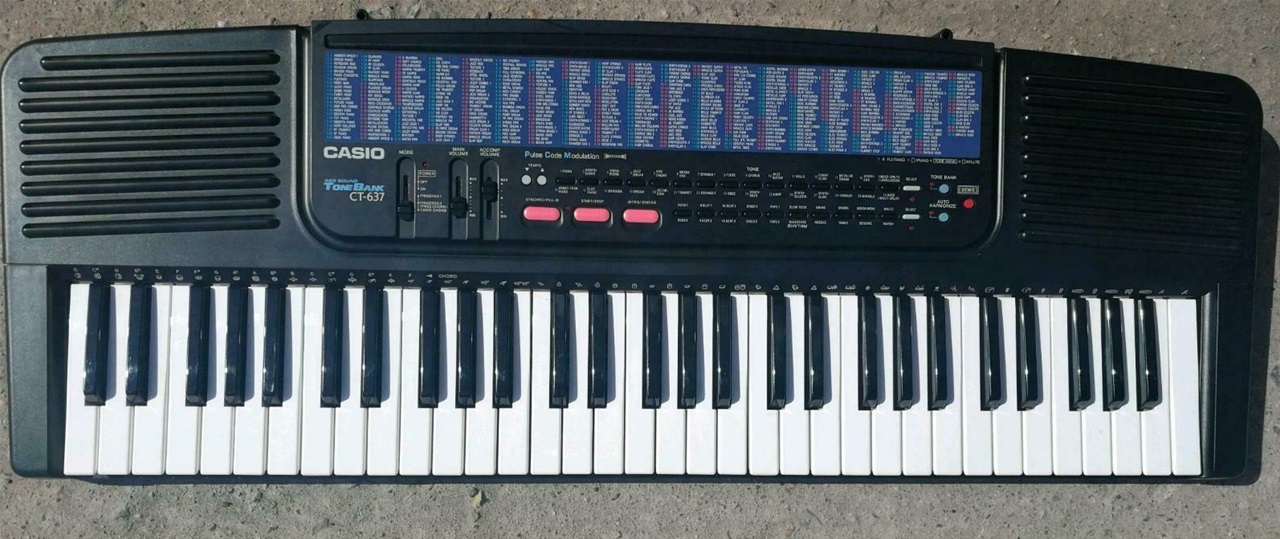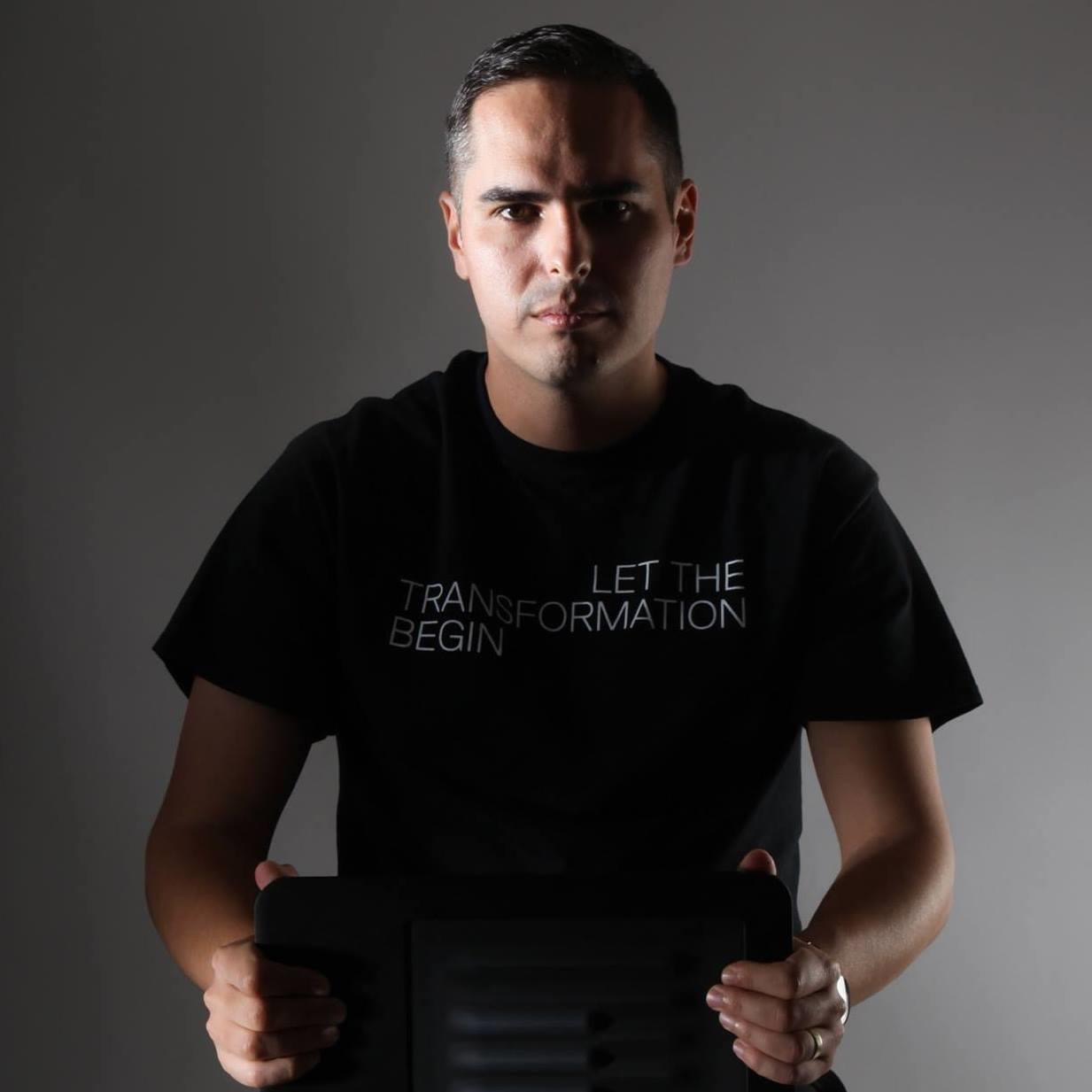Tines, Bells and Warmth – Rhodes, Vintage Vibe instruments
The Rhodes piano has definitely one of the most iconic keyboard sounds out there, being it in jazz, hip-hop or even pop music. Since decades, this is a sound that was commonly used in many music styles and it has always found its way to bring so much flavor in so many tunes. So today’s story will focus on the Rhodes piano, or maybe, better-said, on tine-pianos (and not only..).
The Rhodes is actually an electro-mechanical music instrumental and the sounds is generated in the following way: similar to an acoustic piano, you have a mechanical key-pressing system, the difference is that you are not actually hitting a string, but you are hitting a small metal rod – this is the “tine” – which is connected to a larger tone bar. Do you remember the music lessons you did in primary school when the teacher had a small metal thing (called a tuning-fork) and she was shaking or hitting it on the desk, after that putting it near her ear, in order to hear the correct note before starting a song with you – this is actually what is happening when you are hitting a key on a Rhodes: the tine hits the larger metal bar and starts resonating, thus producing a frequency, thus producing a musical note. Of course, depending on the length and size of the upper bar, the tine resonates differently so you can have a much larger specter of notes, in other words, for each of the keys, you have a different tone-bar – tine construct in order to be on the right frequency, for the right note (this is the mechanical component of the Rhodes piano). At the end of each tine, you can find a pick-up which induces an electric current, therefore you can amplify the sound produced (this is the electrical component of the Rhodes piano). Of course, a Rhodes piano can sound without being amplified, because of the resonance produced between the tines and tone bars, but for proper stage or studio playing, the amplification is quite important (imagine playing an electric guitar without amplifying it… it’s somehow similar). The final sound is quite unique, it can range between warm bell-like timbres and also growling ones, depending on how hard you are hitting the keys, but also on the internal mechanical tweaking. The signature growl sound, or “barking” is pretty unique to every instrument, it is obtained by overtones, these are captured in the magnetic fields generated by how the pick-ups take-over the resonance from the tine and tone bar setups. Slightly changing the tine & tone bar setting could end up in obtaining a different “growling” sound. If you own a Rhodes piano, try it!
I got my first vintage Rhodes some years ago, it’s a ’79 Mark II, I traded it for 2 Roland keyboards (a Juno-D and an XP 80 – meanwhile I got another XP80, I love that keyboard, reminds me of my childhood dreams). It’s a brilliant instrument, in very good cosmetic shape, and I did some upgrades on it (changes dampers felts, some tines, re-tuned it and added a Dyno Pre-Amplifier). I got a very sturdy repair kit from Vintage Vibe company, please check them out, they are really great at what they are doing. I use my Mark II mainly in my home studio, since it is quite hard to carry it, but it’s quite a lot of fun playing it. Going back to Vintage Vibe, besides their repair kits and replacement parts, they are building their own custom Tine-Pianos, which are absolutely amazing! I would say that their sound is in-between a Rhodes and a Wurlitzer, it’s very interesting and warm, and it suits pretty well with the music I play. I also own a Vintage Vibe 73 Deluxe piano which I used in many live shows with JazzyBIT, and you can also hear it in our “Remember” track, on our “Horizon” album. Besides the sound, what I really love is that you can carry it quite easy to any concerts, since it ways less than 30 KG, compared to almost 100 KG for the classic Rhodes. Besides the tine-piano, I also have a Vintage Vibe Vibanet, this is their custom approach on the classic Hohner Clavinet D6 (I am sure you are all familiar with Stevie Wonder’s funky sound from “Superstition” or “Higher Ground”). The Vibanet is also an electromechanical instrument and it’s very similar in approach as my Williams Keytar, which I presented some weeks ago here on my blog. What is really cool, it has a built-in WAH-WAH effect, which you can trigger and customize on-the-fly. I also used this instrument on “Horizon”, you can hear it both on “Remember” and “Le Tunk” tracks. A thing which I like a lot is that you can combine all these instruments with several effect pedals, such as Phaser, Distortion, Chorus or Delay, and you can build-up your sound and customize it in so many ways. Also, to add some warmth to your sound, you can use tube-amplifiers. In my current setup, I use MXR pedals and a Traynor K4 amplifier. Nowadays, the tine-piano sound has been sampled in very high quality, for example Nord library contains very good Rhodes sounds. In the past, the first FM synthesized Rhodes sound came from the well-known Yamaha DX7 synthesizer (more info about this one soon), and quite many keyboardists decided to use keyboards with sampled Rhodes sound instead of the real-deal. I would say nowadays, especially in jazz, it seems there is a comeback towards old-school tine-pianos, but maybe it’s just my opinion.
I use my Vintage Vibe keyboards both in live shows and in the studio. I remember our “Horizon” tour with JazzyBIT, where we had a show at the Philharmonics in Oradea, my hometown. Usually, the concert halls are at the ground floor, or let’s say a smaller elevation, and I don’t really know why I remember that in Oradea it was the same… you guessed it, I was totally wrong. We were coming from Bucharest after one show there and maybe 5 hours of sleep at night, and I was ensuring Michi and Csongi not to stress with the logistics (music gear carrying…) in Oradea, because everything should be fine. All went fine, we parked in the private yard of the Philharmonics with direct access to the back door, so great! We opened the door, but there was not concert hall! Just stairs… and stairs… and stairs.. 3 floors from the back door entrance.. Did I mention we had to carry all our gear, including Csongi’s full drum set, amplifiers and my keyboards (including of course Vintage Vibe ones, Hammond, Leslie, Nords). This goes out to you: if you want free gym exercises, come with us in tours, you will have more than enough, but don’t forget the fun part also!
Electro-mechanical keyboards will always have a special place in many music stiles, and there are so many hits that are based on these classic sounds, that hopefully will never disappear.
The Redhead Gang – My Nord Rig
In my last stories I mentioned quite often the “Nords”, so I decided to dedicate this blog entry not to one specific keyboard, but to all Nord keyboards I have. No worries, I don’t plan on writing a full novel about them, I will focus on describing my live rig and also the Nords I use in my studio.
I wasn’t always a Nord fan, actually first time I tried them I was in Sweden, their birthplace, where I had the chance to play on several Nord Electro 2 models. Don’t get me wrong, they were quite nice, but at that time I was more focused on my Kronos and Hammond setup, not knowing or maybe not realizing the boot-up time of the Kronos (remember my blog about it…) or how heavy the Hammond is (poor Csongi…. ). Nevertheless, the concept of the Nord Electro being focused on the acoustic piano – electric piano – organ – clavinet sound setup was pretty interesting, especially that these sounds I tend to use quite a lot.
After finally deciding that I shouldn’t carry around my Hammond anymore, I focused on finding a much lighter alternative, however still keeping in mind the importance of having all the organ features which you find on a real Hammond (drawbars, chorus-vibrato, percussion, Leslie simulator, waterfall keys etc). And this is how I actually got my first Nord: the C2D! It’s their version of a portable Hammond organ, having all the features described above, with a great Hammond sound and Leslie simulation, and everything in a 16 KG pack.. now that is a big change compared to my 100 KG Hammond & Leslie rig. I usually prefer to customize and tweak a little bit the sounds I use, so, even if the C2D sounds really impressive at “out-of-the-box” power-on, you could get a little bit more in the settings and actually create a much better organ sound (try to play around with the key click or decay settings, Leslie simulation parameters and several other functions, small things matter). Since I got the C2D, I have never ever taken the Hammond out of my studio, and for live concerts and even recordings, it’s really a great organ (I even used it for our 2nd album with JazzyBIT – “Horizon”, connected to my Leslie 2101). What is also pretty cool about the C2D, it has also other organ sounds than the Hammond, for example it can transform in a church organ (the drawbars will act as registers) or it can also simulate a transistor organ (like Farfisa or Vox Continental – remember Ray Manzarek’s organ sound with “The Doors”).
I had some concerts with the Kronos – C2D setup, but in the end I decided to go “all-red”, so, I decided to replace the Kronos with a Nord Piano 2 for my live setup. It’s quite a big difference especially in the key-action between the Kronos 88 and Nord Piano, I find the Nord much more lighter and easy-to-play, but I believe it is also a matter of taste. But the thing which really impresses me is the piano-sound library from Nord! Even if it is sample based, usually a Nord-library piano-sound occupies in average 150 Mb, compared to 8-10 Gb pianos from the Kronos, and the characteristics and sounds are easily in the same range or sometimes even better. Of course, it is a clear matter of taste, but I am really impressed about many Acoustic and also Electric Piano sounds on the Nord, for a live gig and even in the studio, they could be very close to the “real-deal”. I usually use a tweaked Studio Grand sound on my Nord Piano, but there are many others which are amazing, if you are a Nord player, try to find the one which brings the best of your music’s flavor!
Even if these 2 are my main “boards” for a show or recording, I have another Nord which actually I used quite a lot recently: the Nord Electro 5D. I have the smallest version, with 61 keys, and the “D” means it has drawbars for the Hammond engine. As mentioned above, the Electro series are built very wisely, they have the exact sounds that a keyboardist needs for a gig (for me it actually brings together the C2D and Piano 2 in a smaller package – it has the same organ engine as on the C2D, and the same Piano Library sounds as on the Nord). The Electro comes with a waterfall keyboard, perfectly suitable for playing Hammond leaks, but it’s not really the best option for a pianist who is used to the classical 88 hammer-action keybed. Even so, it’s extremely light (8 KG), very easy to carry around and I actually did a lot of concerts only with this keyboard, without having my full rig. Both the Piano 2 and Electro 5D have also Sample area, you can either create your own samples or use the Nord Library ones, and you can play them independently or stacked on your other main sounds. Sometimes it can be a pretty cool effect to have something “different” layered on top of your Rhodes sounds, for example. My Electro 5D travelled quite a lot with me and I was lucky to use it on quite famous stages, such as Blue Note Jazz Club in New York or Porgy&Bess Jazz Club in Vienna, and it behaved very well both at over 40 degrees in Doha or -12 degrees in Sibiu.
The 4th Nord which I currently use in my setup is the newly released Nord Wave 2, which is a synthesizer beast! I don’t have it for a long time, I haven’t actually played with it live yet, but I am preparing some new sounds especially for the new JazzyBIT compositions we are working on. A feature which I really like is the 4 layered zones, where you can create and combine and layer 4 independent sounds. Since it is a synthesizer, you have the possibility to create sounds from scratch based on wave forms or samples (similar to what I was telling you about the Moog Little Phatty, the difference being that the Nord is a digital and not an analogue machine). And a quite new thing, the keyboard is actually waterfall type: personally, I love it, however, this key-bed is clearly not very common for a synthesizer.
So, my current setup consists of the Nord Piano 2 (mainly for acoustic piano sounds), Nord C2D (for Hammond sounds), Nord Electro 5D (for Rhodes, Clavinet and additional organ sounds) and the Nord Wave 2 (for synthesizer sounds and effects). I also use a Haken Continuumini (which I will describe in another post) and my electro-acoustic Hammond melodica. Additionally, I use an 8-channel Radial ProD8 DI-Box and Monster Rock audio instrument cables, Nord triple pedal for the Piano, 2 x Hammond FS-9H foot-switches for the Electro 5D and Wave 2, one Yamaha FC7 volume pedal and one M-Audio Sp2 sustain pedal for the C2D. I also use one K&M Spider Pro – Red double stand, 2 x Adam Hall SKS05 stands and a Mey chair (which looks pretty crazy, but it’s very comfortable and helps you keep a correct back posture while playing – pretty important for me after having a serious back issue some years ago) - this maybe was a too technical paragraph, sorry for that, sometimes I just can't help it.
In my home studio I also use a Nord Lead 3 (probably one the best synthesizers Nord ever created – before the Wave 2), a limited edition Nord Lead 2X (with inverted keys – this was created for Nord’s 25 year anniversary and it comes with a certificated signed by Nord Keyboards’ CEO) and a Nord Modular G2X (this a very interesting and pretty powerful concept form Nord – it is digital modular synthesizer, you are actually creating sounds by digitally linking synthesizer modules in between each other – it’s quite complex to use, but it offers you endless possibilities and it also includes a sturdy Vocoder). Sorry to disappoint you all, I do not have a Nord Stage, this being the flagship of Nord Keyboards company. The simple reason is that the current rig I have is more than enough for both my live shows and any recording sessions, nevertheless, ask me again in one year and I might answer you in a completely different way!
There are many other great keyboards on the market, I truly believe that it’s important to have, first of all, a very “comfortable” rig both for your playing style and also for your music, and secondly, a rig which actually brings the best out of you and does not limit you in any craziness you might try to achieve, but that’s just me… a keyboard-IT-ist who truly believes in doing thinks with passion.
When Music Meets Science: Moog Little Phatty
Last time I was telling you about my personal categorization when it comes to keyboards. Today we will enter the synthesizers category which is really one of its own. Furthermore you can split the synthesizers into several groups, depending on different factors. One of the most common split is analogue vs digital, you can also split them based on the number of notes you can play simultaneously, like monophonic, duophonic or polyphonic, or you can split them by their built type, like modular synthesizers or “self-contained” ones. But going back to the “debate of the century” – analog or digital? I truly believe this will be a constant topic of discussion and it is really hard to decide for a winner, for me both technologies have their own value when it comes to sound design, reliability and even logistics.
Going back to today’s story, my first ever synthesizer was a Moog Little Phatty, this is a really great machine and it’s one of the last synthesizers fully designed by the great Bob Moog. For those who haven’t heard of him, he is really the father of synthesizers – actually he was an engineer, not a musician, and he invented things like VCO (voltage-controlled oscillator), VCA (voltage-controlled amplifier), pitch shifting or envelopes, all of these are the basis of most of today’s synthesizers. He was really a game changer, feel free to google him and read his biography and interviews, they are very catchy. The Little Phatty is an analogue monophonic synthesizer and even for newbies, this is an extremely easy-to-use and versatile machine, the built design is very good and, personally, it helped me a lot in learning from basics what “synth-ing” is all about. The sound is produced by a combination of factors, the main one being the VCO. The actual oscillator is a simple electronics concept which produces a waveform (it can be of different types, like sine or sawtooth). The waveform obviously has a timbre and the next step is to actually shape this by adding a filter on it. What you can also do is apply an envelope and you are already in the harmonics shaping part (remember the Hammond organ tonewheel concept which was the basics behind of the organ’s harmonics), and, last but not least, you can amplify the volume of the signal by using a VCA. This is just the basics how you can create sounds with a synthesizer, in analogue machines it’s really a combination between understanding the electronics concepts and applying them in order to customize your sound.
I actually own 2 Little Phatty Moogs, one is the Stage 1 edition, in classic grey look, and the other is a limited Red-back Stage 2 edition (yes, it’s red, and it goes along greatly with my Nord keyboards.. it’s all about fashion looks..). Nevertheless, both machines are really great and I’ve been using the Stage 1 in many live shows, both with JazzyBIT and also Quo Vadis. I really enjoy the deep bass sound of the Moog, it is their signature sound and it’s unmistakable. But you can create so many other crazy patterns with it, just by experimenting around with its main components.
Out of all the synthesizers I own, the Little Phatty is really a fun-to-play one, but it can be full of surprises as well. I remember a concert with JazzyBIT at Sibiu Jazz Festival, where the stage was outside, but in big tent. It was pretty cold at that time, it was in May 2012, and we had our soundcheck around noon and the keyboards remained on stage until our concert in the evening. But during the afternoon, it rained a lot and it got even colder, and I was about to have a big surprise at the concert when doing a solo on the Moog. Because of the cold weather and because the Little Phatty is an analogue synth, it actually got detuned during the afternoon, so when I started my solo I was in a complete different key than the actual song. I know what you think… it’s jazz.. it doesn’t matter… Well, it does! Trust me, when you are in-between keys, it sounds good only for microtonal music fans (about this in a future post), so, the best is to quickly get back on track and find a way to either re-tune yourself or adapt to the situation. Luckily the Moog has a tuning knob, however I only had time to “tune” it to a fix value, and I was still under the song key with one tone, at least it was much better than to be in-between. Therefore, I had to play my entire solo in a different key, but it turned out well in the end. Anyways, it’s pretty funny to hit a key and you get a totally different note than expected, so, since than I have a portable heater with me at every concert….of course I don’t… but I can imagine what would have happened if I would have used the Little Phatty especially at the Christmas Carousel Festival in Sibiu, where we are playing at well below freezing temperatures.
I will write more about synthesizers in my next posts, personally for me it’s great to be able to adapt and link together things I learned in high-school and university with parts of my music. In the end, your music can be also a combination between art and science, between emotions and reasons, between dreams and reality..
The Titan: Korg Kronos 88
In general, you can split keyboards in several categories, mainly based on their functions, but also on how they are supposed to be used. If we are talking about professional models, I usually split them into 6 categories (this is of course my own view, based on how I use them): workstations, stage pianos, organs, synthesizers, arrangers and miscellaneous. Let me start from the end, my last category is really the coolest, since it contains the “strange keyboards” family, such as keytars, melodicas or futuristic touch-based instruments (more about those pretty soon). Arrangers are the keyboards that actually “play mostly on their own”, in other words, these are those instruments which can actually simulate a full band with a touch of a key (I am sure you’ve been at many private events or weddings were traditional music was played and there is always at least one keyboardist which does half of the orchestra from his keyboard – so arrangers are pretty powerful machines). Synthesizers are for me a special group, since the effects you can produce with them go way beyond any classical keyboard sound; it’s quite easy to recognize them: these are the keyboards with the most knobs, switches and potentiometers, and sometimes they look like old telephone exchange systems. Organs are always a separate category for me, due to the love I have for the Hammond models, and not only (I had some concerts on church pipe organs while I was a really young, an I was mesmerized by them). Stage pianos are the actual digital cousins of real pianos, you can recognize them from their sound (usually they are used for acoustic or electric piano replication) but also because of the full hammer-action keyboard which is extremely similar to the one of an acoustic piano. Workstation keyboards are always impressive because of their variety of functions and endless music creation possibilities: these are actually engines where you can create full-band simulations, from scratch.
In my first year with JazzyBIT, I started to search for an upgrade to my Roland RD170, since I wanted a customizable piano sound, but also a new keyboard with more possibilities in regards of effects and new generation sound engines. This is how I laid my eyes on the Korg Kronos. This is so much more than just a workstation: it actually has a computer inside, with an Intel mainboard and Intel Atom D510 processor, with 2GB of RAM and a 30 GB SSD disk – not bad for a 2011 keyboard model! Based on the specs, I have the first edition of Kronos, the 88-key model, with hammer action keyboard (similar to an acoustic piano). There is a general rule: the more complex one system is, the more issues you have … and unfortunately I had one annoying issue with it: some of the first built models came with a combined hardware-software error, where the keyboard was cutting off or even doubling notes (especially on Organ tones). This is extremely annoying, especially when it happens randomly during a show or recording session. Nevertheless, the issue was fixed with a software upgrade and also a brand new keyboard panel which has a really interesting feature which I haven’t seen on other Kronos keyboards so far: I can mechanically adjust the weight of my keys depending on how easy or hard I prefer to press (I have some specially installed screws underneath the keyboard bed for this tweaking), pretty neat, right? I guess you all know by now that I am also a computer fanatic, therefore I had to open the Kronos to check what goodies it has inside: and I was super happy to see that actually it has one additional free RAM slot and also a second SSD connection port, so I immediately upgraded it with additional 2GB of RAM (4 is the maximum supported) and one 180 GB SSD. Now my Kronos was ready for action!
The keyboard has unlimited possibilities, and this is primarily because of its 9 individual sound engines which offer a variety of realistic and fully customizable sounds, including acoustic or electric pianos, Hammond or church organs, analog or digital synthesizers and also physical modelling for a super high-quality approach on string instruments (guitar, violins, cellos etc). Imagine that one state-of-the-art piano sound can be tweaked at very deep levels, touching things like string resonance, lid position, damper pedal noises or natural harmonic levels. As an example, a customized piano sound can have over 10 GB in size.. so you can imagine the level of details in there. You can actually create some very realistic sounds if you take some time and fully understand the capabilities of the Kronos – for those who own one, I really recommend this.
I used my Kronos a lot in live shows, and it’s a real pleasure to play on it.. unless you have a power failure on stage.. than you are doomed… Remember, the Kronos is a computer… therefore, if it’s shut down or it looses power, it needs around 1 minute to reboot. This happened to me at a concert we had in Oradea at a newly built club… so new, that they were actually still painting and decorating it when we arrived for soundcheck! Imagine our faces when we ended up at a fully-functional construction-site, 4 hours before a sold-out show! That was epic! Obviously we did an improvised soundcheck together with the construction workers, which I truly believe they had quite different music genre preferences that the ones we were playing… I guess more Balkan ones.. you know what I mean.. still, Csongi’s drums are always a life changer, and everybody likes loud drum rhythms, no matter what me and Michi are playing beside. The workers were pretty fast, since for the show-time, the club was ready (well… almost ready, it looked anyhow much much better than at the soundcheck). We had a really nice show, many people showed up, and my Kronos shut down only 2 times because of the newly installed electrical system. Luckily I had my Hammond along, so I could quickly switch to it while the Kronos was booting, and also they boys saved me with an improvised bass-drums dialogue, which we actually used in other shows because it had quite a great success! If you want to hear my Kronos in action, listen to our "Touch the Sky" record with JazzyBIT, and also check our A38 concert in Budapest, you can find it below.
Nowadays I use my Kronos in home recordings only, since I switched to Nord keyboards and they are much more suitable for live shows. Even so, it is one of the most powerful keyboards I have, and it still impresses me with its endless features and versatility!
See my Kronos in action at A38 Club in Budapest
Formula One Red Rocket – Williams Keytar V2
I guess you all expect that I am writing my blog chronologically, I hope you will not be disappointed if I tell you that, actually, I write this strictly by feeling. These last days I had a specific keyboard in mind which I was thinking to write about, however I changed my mind 10 minutes ago… funny, right? There are times when I change my mind quite often in a short period of time.. especially when referring to the music rig I use for a specific concert (especially Michi knows this…and I am positive he likes it a lot…NOT..).
When you are a keyboard player, you are more or less strained on a chair the entire concert, sitting and playing in your stage-corner, sometimes even hidden behind all your keyboards. But there are some “escape” possibilities out there, and even a keyboard player could actually run all-around the stage during a concert… in a good way I mean, with an instrument, playing music.. not just running around like a marathon (I’ve seen that also one time….). The solution is having a keytar: imagine having a guitar-like keyboard, you hold it like a guitar, with a strap, and you have keys instead of strings. Herbie Hancock, Chick Corea or George Duke often used keytars in their live shows, and I really enjoyed watching them entertain the audience and actually playing their keyboards from a complete different perspective. So, as Teo usually says, “I must have one… “.
I did not have a specific keytar model in my head, but I wanted it to be quite special. When searching for new instruments, I especially look for unique or specific sound characteristics or features, this is quite hard to get in a keyboard instrument, however, trust me, it’s possible. And the uniqueness appeared one weekend, while I was in my hometown, at Oradea, browsing through Ebay. I stumbled on a really interesting item called a Williams Keytar. I have never ever heard of this brand before, so I started to dig a little bit more. The Williams Keytars were built around 2005 in Arkansas by a guy called Vinson Williams (as far as I know, it has nothing to do with the Formula One brand … or tennis champions Serena and Venus), and they are very rare today, because, sadly, the company did not last long. These are not electronic instruments, so actually they have only one sound which is produced more or less like an electric guitar: when you press a key, you are hitting a string, and from here it’s the classic guitar mechanism – the Williams has actually 2 custom-made EMG pick-ups which help in producing it’s very interesting sound. There were 2 models built, the V1 – which had 1 octave of notes, and the V2 – with 2 octaves. Going back to my Ebay excitement, this was a V2 in perfect condition, with original case and strap, in “Ferrari-Red” color (never thought at that time that it will fully match my future Nord keyboards). The keytar was located in US, and I had 2 major problems: how to get it from there and, obviously, how to pay for it (better said, I couldn’t really afford it on my own). Luckily, my dear grandma helped me with the entire “acquisition budget”, and one of my work colleagues was having a business trip in US exactly during those days…I was soooo lucky… So, I bought it right away on Ebay, and I immediately called my colleague in US to ask for a delivery address, unfortunately for him it was early afternoon for me in Romania, which means I called him at 3 AM … did not realize that until I heard his voice… Even so, he was so nice to help me with it and he brought it back to Timisoara as his personal carry-on luggage (many thanks Alin Bria for that).
I’ve used they keytar a lot in live shows with JazzyBIT, especially the ones during the “Touch the Sky” album period, and I loved to combine it with Wah-Wah effects or my Talk-Box pedal, for a more funky sound. Basically it sounds like a clavinet (think of Stevie Wonder’s “Superstition”), but it looks like an “alien-crafted” instrument. Almost everywhere I played with it, it was quite a highlight, especially because of its appearance. A friend of mine from Bucharest told me that we would have played an entire show only with the keytar, if it would have been in my position… well, this is a challenge which I am not ready to fulfill.
I remember two funny stories with the Williams keytar, first was at Alba Jazz in 2013, where we were so lucky and happy to open for Omar Sosa’s quartet. At the soundcheck, Omar was very curious about my keytar, and he played quite a lot on it (he actually used my keyboards for his concert and since than we are good friends), I remember him saying that this is a “super crazy” instrument. The second story was at Budapest Jazz Club, with JazzyBIT (yes, this is the famous place where Csongi was carrying my Hammond and Leslie, remember my last story..). I was preparing my keytar for the soundcheck, and I was having no sound.. I became quite stressed because this never happened to me before, and I did not understand what was happening… I plugged the keytar in several Amps and still nothing… I am sure that all guitar players reading my blog already know the issue, but me, as a keyboards guy, I was clueless… what actually happened, the battery for the EMG pick-ups was gone… I had no idea that I had a battery in there, now I certainly do! The sound engineer from the club was really nice and bought me one, both him and Michi realized it must have been the battery, so with their help I could successfully use my keytar in the show. Speaking about that, tomorrow I will check the battery again, since I haven’t played with it for some time…
Hammer, Rocket, Alien-Rig, Formula-One, Tomahawk… my Williams has been named in many ways, but for me it’s just my first red keytar and I must say, I love it since it’s pretty unique!
The One to Rule Them All! Hammond Mini B3 – XKC3 Pro
Remember how was I writing about my organ solos on my precious Casio, you could say I fell in love with the Hammond sound since I was in high school. Actually, that is totally wrong. Even though I used organ sounds at that time, the real motivation came some years later, thanks to my favorite organ player: Billy Preston. I was watching a 2001 Eric Clapton concert – One More Car, One More Rider (if you haven’t seen it, please do - it’s a must!), and I was super impressed on how Billy Preston brought the flavor with his Hammond “chops”, especially the organ solos on “Have you ever loved a woman” or “Reptile”. After watching the concert hundreds of times (I still do it today), I was fully decided to have a Hammond of my own – thanks Billy for waking up the organ-beats in me!
My first organ was a Hammond Xk1, quite far from a double-manual beast, but still a mighty one with a lot of potential. It had mostly all the elements what a real organ has, like drawbars, percussion, vibrato or Leslie simulation. But let me first tell you what these things are (for the “organ nerds”, please bear with me a little bit..). Drawbars – these are actually the heart of the Hammond organ: like on a real church organ, to be able to make different sound types, you have registers you can pull them out (they look like a fancy door knobs, but instead of rotating them, you pull them towards you). On the Hammond, they look like “bars” and they are located above the keyboard, and you can “draw” them out – so you can see where their name comes from. In total, you have 9 drawbars per keyboard, and each of them represents a harmonic of the note your are pressing on the keyboard. Now you think.. what is that harmonic and how is it generated? Well, it’s not that complicated. As a general fact, a harmonic or let’s say a sound or even a musical note is actually generated by the frequency of a signal – you need a small alternative current to achieve this – going deeper, you need to generate a magnetic field to have the alternative current – particularly in the Hammond, this is generated via the so-called “tonewheels”, which are small metallic wheels linked to individual tiny engines, each rotating in front of a classic pick-up (better said, a coil). So, when you press a key and pull out a drawbar, a tonewheel starts rotating in front of the pick-up, the magnetic field created generates an alternative current which has a frequency, and there you have it: your first Hammond note! But here comes the cool part: each pick-up & tonewheel pair is preconfigured to generate different frequencies (either by the rotation speed of the tonewheel or by the size of the pick-up coil). So, in other words, by simply pressing ONE note on the keyboard, with the help of the drawbars you can actually create a lot of different sounds (as mentioned, you have 9 drawbars, and each of them has 9 volume levels based on how much you pull each one out). There are endless possibilities to produce sounds with a Hammond organ! Besides the drawbars, you have a lot of other features you can use for making your sound more colorful – percussion (this is also a harmonic trick, and actually it adds a xylophone effect when you first hit a note) or vibrato. But the best is yet to come: the Leslie speaker. Once I read an article which had a great phrase: “The Hammond and Leslie are a pair made-in-Heaven”, and this is so true! The Leslie is actually a rotating speaker and you can trigger via a switch the rotation speed of the speakers (slow or fast). Compared to a classic vibrato, this is so much more than that! And, since today I am also a little physics buff, I can tell you that the entire Leslie configuration is based on the Doppler effect. But I will stop here with the technical parts, hopefully before you decide not to read this anymore…Forgot to mention, on the Hammond you can also play with your feet!!! Not directly on the keys… you have a special pedalboard for that.
Back to my XK1, I gigged with it for some years, both with Bluestation and JazzyBIT as well, but finally I decided to upgrade it to my current one: the XK3C Pro. This is actually a digital Hammond model (so all the tonewheel thing explained before is actually simulated via integrated circuits), but the sound and feel is there! And I have not one, but two Leslie speakers connected to it (3300 WP model and 2101). My first concert with it was at a Jazz Festival in Targu Mures, where we had a really funny happening. The presenter of the show clearly had no idea what a Hammond organ is… and when he was introducing me to come to the stage, instead of telling that I was playing the organ, he mistakenly made it sound like I was playing on an actual human body “organ” which is called Hammond.. and clearly not a musical instruments… My colleagues Michi and Csongi had a great laugh about it in the backstage while I was going up the stage… Feel free to use your imagination how this was for me…
But I have also funny memories on Michi and especially Csongi, how they were carrying around my Hammond and Leslie (this sounded bad.. I know, but I am also there helping all the time). Once we were at Budapest Jazz Club in Hungary, a great venue by the way, and we were unpacking our gear, and Csongi was the unlucky one helping me with the Leslie. The 3300 WP model has around 54 KG and for me it was not very hard to carry it, especially together with somebody. But for poor Csongi, it was really heavy… and, after several tours together, I finally understood why: Csongi’s full body weight is similar to the Leslie’s weight… so poor guy, he was actually carrying himself at our gigs… I really felt sorry for him, but I must say, we also had a great laugh about that. Since some years, I haven’t used live my big Leslie, but you never know when this will change…
I used my Hammond and Leslie on our first record with JazzyBIT – Touch the Sky, and it traveled with me throughout Romania, Hungary and Austria, but maybe the most memorable thing was having Joey DeFrancesco playing on it at Garana Jazz Festival, in 2014. I haven’t “washed” it since…Currently I switched to a Nord C2D, much lighter and easy-to-travel model, which I will describe in a later post.
The Hammond is so much more than a simple organ, it’s more like a synthesizer, actually it’s one of the first synths made. And leaving the sound apart, another favorite organ player of mine, Dr. Lonnie Smith, described it in an amazing way at one of his interviews: “it has all the elements: the rain, the storm, the sun, the moon, the earth, the water, it has everything in it, and that’s why I love it!” So do I.. so do I…
Great Sound, Great Value, Great Weight! Roland RD 170
My second keyboard has a great story behind also, and I am more than happy to share it with you.
Back in ’98, ’99, I was studying jazz piano at Francisc Hubic Art School in Oradea with my teacher, Mr. Ari Nagy Sandor. These were really great times, I was studying the classic blues or learning jazz standards by Oscar Peterson or Dave Brubeck. Besides attending the music hours, I tried to go to many live music events and I remember there was a venue called JazzLand in my hometown, which hosted frequent jazz and blues concerts or jam sessions. My friend (and summer-teacher at that time) Cristi Moldoveanu was playing there regularly, and at one concert I was able to step-in and play a blues. The club had a Roland RD 600 in the backline, and it was a big surprise for me to see a full 88 key digital hammer action keyboard, actually for the first time in my life. Remember, I was a “genuine” Casio player at that time…basically any other keyboard could pretty much impress me. I really liked the RD 600 from Jazzland and I had some cool concerts on it with my friends in Oradea, and you can imagine that I would have loved to own one.
After moving to Timisoara, I was playing with my friends from Bluestation (amazing times – Ramo, Cooky (Erwin), Tomi and Bogy). We won 3 prizes at the “Iuliu Merca” Memorial Music Competition in Cluj, including the one for “best keyboardist” – that was the time I called my father and asked him to “upgrade” my “music rig”. I remember telling him: “Dad! I won 1st prize with my Casio! And every keyboard player had a much better instrument than I did! Please, buy me a better keyboard!” which, of course, he agreed to do. Literally next morning I took the train from Cluj and stopped in Oradea (instead of continuing to Timisoara) and went together with my dad to order the mighty Roland RD 170! This was a newer model, compared to the RD 600 from JazzLand, and I was already “stalking” it for some time.
Two weeks later, I got a call from my parents that piano arrived at my home! I was so happy, I immediately took the train from Timisoara to my hometown to get this new keyboard. Those were some of the longest 3 hours which I've endured: thousands of ideas were running through my head.. does it have good organ sounds? how does the piano sound? can I link it to my computer? Silly me, I never ever thought about how much it weights…or how will I carry it to the student campus… I arrived in Oradea around noon, fast-walked from the train station to my home (it must have been a new speed record), “Hi Mum, Hi Dad, Hi Grandma” – “where is it?!” – the answer was: “Come, let’s have lunch first”, but, honestly, who is hungry when a brand new stage piano is waiting for you!
I absolutely loved it! Piano sound was great (for those times… Nord Piano or Korg Kronos were far from being born yet) and I finally had touch sensibility in the keyboard.. and sustain pedal! Jazz organ area – it had 4 variations which included the classic Jimmy Smith (at that time I had no idea who he was..) and a really crunchy John Lord-like sound (with distortion and fast Leslie – obviously, I did not know these technical terms than). But the sound which I loved the most was “Jazz Scat”, good job Roland with that! It’s a voice-pack sound which changes depending on how hard you press the keys (I have it today on other 2 Roland keyboards I own, more details soon, here).
Well, weekend passed and I had to return to Timisoara, of course taking my Roland with me. But nobody thought I needed a custom-bag for it.. the one made by my grandma for the Casio was definitely too small.. So, I had to take the Roland in its original box.. that was HUGE! Only the keyboard weighed more than 20 kg, imagine how “light” it was including the original package. Nevertheless, we managed to take it to the train station, and I had a privileged seat, somehow in the lobby of the train, because it was the only place where I could fit my huge box near me. Of course, I had at least 2 additional bags with food and clean clothes.. remember, I was still a student… so home trips always included the food and clothes “upgrade”.
Arriving in Timisoara, I asked my friend Erwin to wait for me at the station, he already knew that I have my new keyboard, so he was there ready to help me. Obviously he did not expect it to be so huge! And he came with his wife and a friend at the train station, waiting for me. Oh, did I tell you he owned a Daewoo Tico?! For those who don’t know the car model, this is one of the smallest ever made..
Whoever would have guessed that the Roland RD 170 box is specially designed for the Tico! It fits perfectly between the windscreen and the rear window! From the train station until the campus, we were perfectly hearing each other in the car, but NEVER saw each other! And we had several trips like that in the next months and years, because we had many concerts with Bluestation, and Erwin’s Tico was my piano’s custom delivery partner! Really crazy times, but at least I became a quite good co-pilot for Erwin, especially because I HAD to… That evening we had a party in my dorm room, I played all night long my Roland: finally, I had a key which was heavier than my custom-made keyboard stand!
The RD was my main board at many concerts, including the first ones with JazzyBIT. I sold it when I upgraded to my Korg Kronos, but after some years, I decided to get it back, in memory for my father. I found it in Iasi, many thanks to Bogdan Sonohat and Liviu Marian for that! I had a concert at the Iasi Street Food Festival and Liviu brought it back for me: it was a joy to play it live again! Thanks to my dear friend Vlad Cotrus, the RD arrived back safely to Timisoara. This actually happened 3 years ago, and I haven’t played with it live since than, but I am extremely happy to have it back.
My Casio CT 637 and my Roland RD 170 are and will always be my most valuable keyboards because my parents bought them for me. They sent me to my first classical piano lesson and they had the idea to try a different musical approach for me, when offering me the option to study jazz. There aren’t enough “thank yous” for that!
A Watch or a Keyboard? Casio CT 637
In any musical instrument there must be a funny story, and my Casio has definitely more than one! This is my first ever keyboard, and, I still have it! It will always have a special place, both in my heart, and my home-studio.
I remember even today that special moment when I got it! And trust me, it was really special. In my childhood I practiced fencing, having 4 practices per week, always starting around 5 PM and lasting for at least 2 hours. My parents wanted to make a surprise for me and they planned to bring the keyboard home while I was out at sport. However, specifically on that day, the practice was cancelled, and it took me less than 10 minutes to arrive home from the training hall. Getting closer to my home, I realized there was a car parked in front (we did not own one at that time) and somebody was taking out a big package from the trunk. Suddenly I see it’s a big music keyboard box, and I was thinking, wow, that is so cool, I must have a neighbor who plays piano, I must meet him! But wait… my parents are carrying that music keyboard! And I starting running a little bit and I remember saying: “Heeeeeyyyy….what are you doing with this??” Well, it was indeed a funny story and I will happily remember it forever. I forgot to say.. I was 11 at that time…
I had quite a few gigs with my Casio, actually it was my only keyboard for at least 9 years, so it travelled and also suffered quite a lot, even so, it’s still fully functional even today. I remember one of my first concerts with it, in Oradea – my hometown, I was playing in a band with Vlady Sateanu called Thamyras, and we were doing Deep Purple covers. Imagine my Casio during a Child in Time or Smoke on the Water organ solo… Still, it was quite a joy to play it, without any keyboard velocity, MIDI, balanced line-out or high-quality sampling. I was 14….who cares at that age about those…Just play and have fun! And try not to break any keys.. which I did unfortunately.. but luckily with my father, he fixed them (like any other thing I managed to broke while I was a child). You know, it’s pretty funny when I am thinking back to those times, I’d wish I could still play with that “childhood innocence” feeling… I bet many musicians know what I mean.
Moving to Timisoara as a student, my Casio came along, and it also got an upgrade! I finally got my balanced output, thanks to my friend Erwin Szabo for that! Until then, I was using my headphone output with a converter to connect to the main sound system, imagine the face of any sound engineer seeing that…. Gigs continued, and also the broken keys…But the fun of playing was getting bigger and bigger. I was starting to dream about having a Roland Stage Piano (RD series were really amazing at that time), and even starting to like more and more the Hammond Organ sound, but more about that in my next “episodes”. For now, what is important to mention, my Casio had a custom bag – “made by my grandmother” and, obviously, I did not own any keyboard stand (I was also borrowing or improvising one at my concerts) until my friends from BlueStation made one for me, and it was much heavier than my keyboard.. It was a lot of fun carrying both, without having a car at that time. I have quite a lot of nice memories with my Casio, and I am truly happy to still own it! I would highly recommend this to any musician friend: NEVER sell, give or through away your first gear!
PS: Never touch the red DEMO button on the Casio while you are playing live! I did it… and it’s really not nice to have a children’s song starting in the middle of a rock or blues show.
